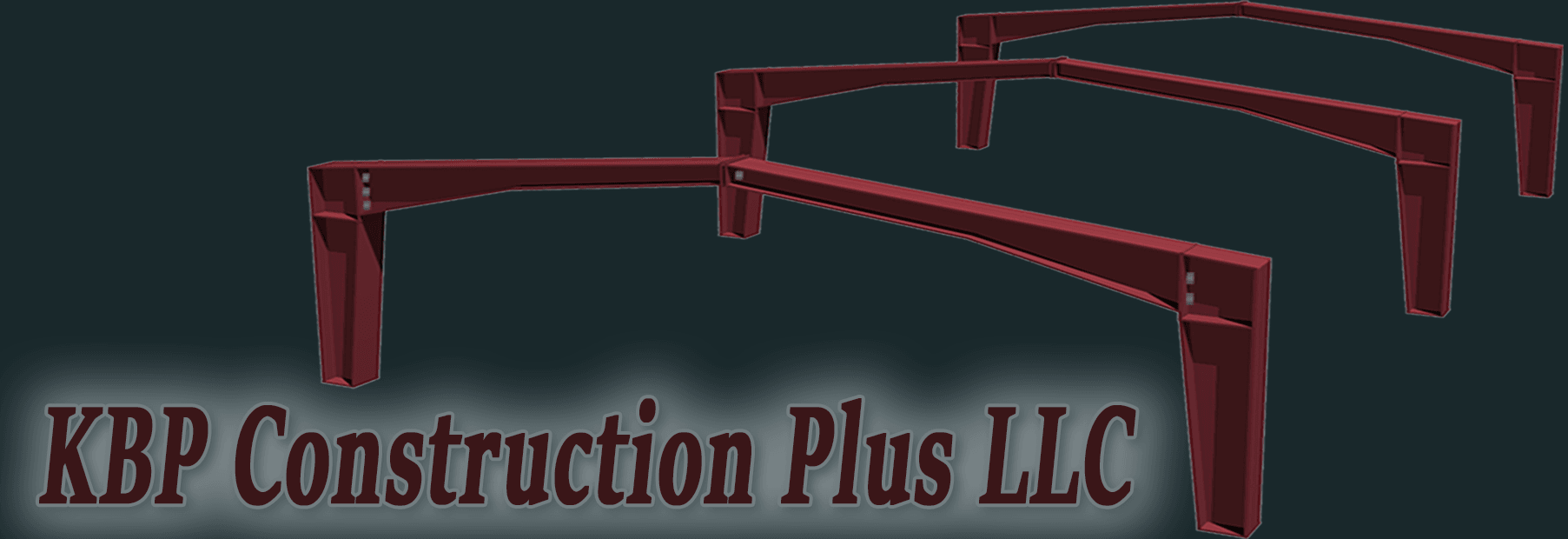Tips for selecting and installing skylights for metal roofs
- January 7, 2020 /
- Insider Tips & News
Skylights have come a long way from the days of lay-in fiberglass panels. Their rapid degradation was spurred by UV exposure that not only decreased the daylighting efficiency but also caused the material to become brittle and dangerous. In fact, industry professionals have even referred to these lights as “widow makers,” because of the likelihood of injury from falling through the lights.
Luckily, the emergence of innovative new skylights has made new and retrofit installations simpler and safer—even for commercial jobs using metal roofs. As with any construction or remodeling job, a certain amount of planning is necessary to ensure proper installation, and it’s important to consider the right product and installation method for each job. When specifying or installing skylights for metal roof applications, remember the following key points.
Proper Curb Installation is Key
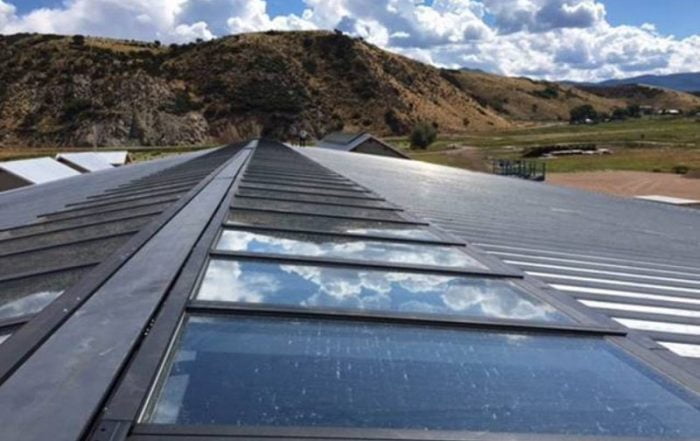
Metal roof skylight installations are increasingly moving toward curb-built attachments, and one of the most important things to consider is the construction of the curb. Though modern skylight systems are packed with components to help mitigate water intrusion through the structure, a watertight seal between the curb and finished roofing material should be the initial and primary consideration to ensure a successful installation.
Similar to vertical window installations, installers should consider the path of water around the opening and plan to minimize the interaction as much as possible. For skylight applications on sloped roofs, the critical joint is the high side where water will both reach the curb and be a potential ponding spot. To eliminate the risk of water build-up, the high side of the curb should always have a cricket or diverter installed, either as part of the curb or as a secondary component. This will ensure water does not dam on the top side of the structure. Proper curb installation is essential as is matching the roof and curb profiles to ensure correct skylight attachment. As with all skylight jobs, providing a proper attachment for the skylight and sealing critical joints will decrease the chance of leaking.
Similar to vertical window installations, installers should consider the path of water around the opening and plan to minimize the interaction as much as possible. For skylight applications on sloped roofs, the critical joint is the high side where water will both reach the curb and be a potential ponding spot. To eliminate the risk of water build-up, the high side of the curb should always have a cricket or diverter installed, either as part of the curb or as a secondary component. This will ensure water does not dam on the top side of the structure. Proper curb installation is essential as is matching the roof and curb profiles to ensure correct skylight attachment. As with all skylight jobs, providing a proper attachment for the skylight and sealing critical joints will decrease the chance of leaking.
Ensure Effective Flashing
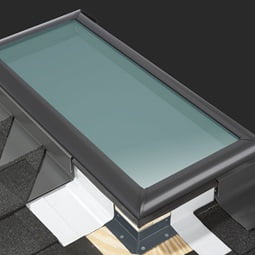
In addition to laying the proper curb, it is important to employ effective flashing techniques. For metal roofs, this requires more than using the appropriate amount of liquid flashing; careful consideration of material interaction should be taken. Using dissimilar metals on a metal roof will spur on corrosion. For example, steel cannot be combined with aluminum, copper or even some stainless steel. However, using a silicone sealant or waterproofing membrane over the entire roof will limit rust and ensure the skylight is flashed and sealed properly.
Selecting the Right Skylight
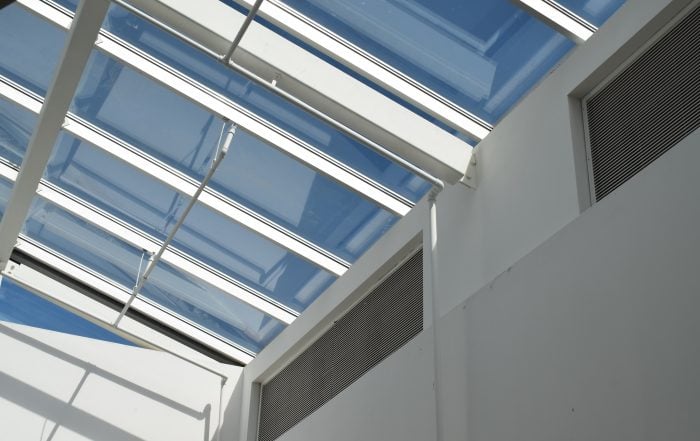
So long as proper installation and sealing methods are followed, selecting the right product for a metal roof is mostly dependent on the building and use of space.
For industrial spaces, like warehouses or storage facilities, there are domed options like the VELUX Dynamic Dome. This skylight is engineered to capture optimum levels of natural light and more early morning and late afternoon daylight, providing maximum energy savings. It will allow significant light into the space and can serve as the primary light source.
For buildings where design is just as important as function, like schools and hospitals, there are more prolific options available, like the VELUX Modular System. These types of glass systems let light into buildings while also giving occupants a view of the outdoors. Plus, this type of prefabricated system is beneficial for installers as it requires no on-site glazing.
For buildings where design is just as important as function, like schools and hospitals, there are more prolific options available, like the VELUX Modular System. These types of glass systems let light into buildings while also giving occupants a view of the outdoors. Plus, this type of prefabricated system is beneficial for installers as it requires no on-site glazing.
More Energy Efficient
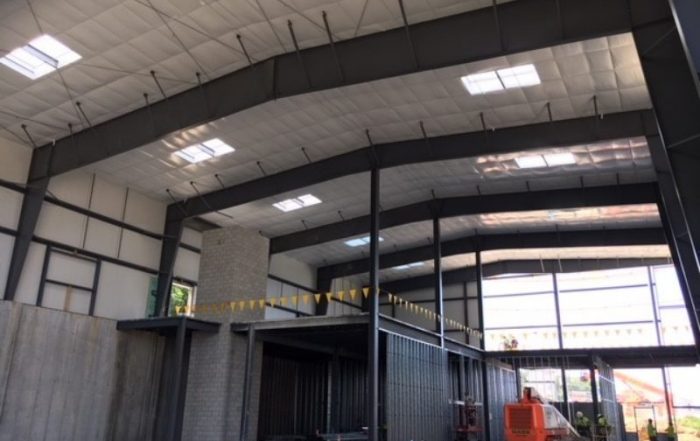
Skylights are great options to make spaces healthier, more energy efficient, and reduce electricity costs. A properly installed skylight makes buildings greener and reduces their carbon footprint, and, fortunately, metal roof installations are no exception.
Today’s skylights provide durable, safe options for incorporating natural light into commercial spaces without the risk of leaking or erosion. New and retrofit skylights on metal roofs offer time-efficient installations, energy efficiency and, most importantly, durability and peace of mind.
Written By:
Brian Grohe
Commercial Sales Manager for
VELUX America LLC, Fort Mill, S.C.
